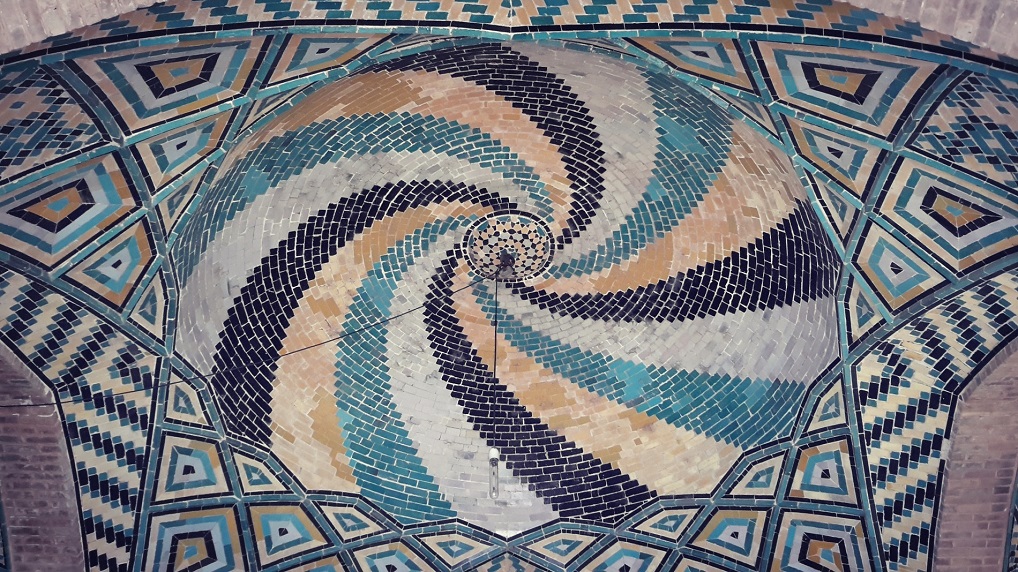
Complete Travel Guide to Qazvin
Qazvin is a city of ornaments and gorgeous tiles, “a city in the middle of a garden” (that`s how Nasreddin-Shah described it to his European counterparts in the 19th century). Finally, Qazvin is the gate to amazing Alamut valley with its impressive castle. Unfortunately, Qazvin is often missed out by tourists, while it can be an amazing stop on the route to Rasht, Zanjan or Tabriz.
I have prepared a travel guide for you where I am going to write about the vibe of the city, its people, main tourist attractions, share some useful tips and my own experience of traveling to Qazvin. Hope you enjoy!
I have gathered all the places mentioned in this Qazvin guide in this map.
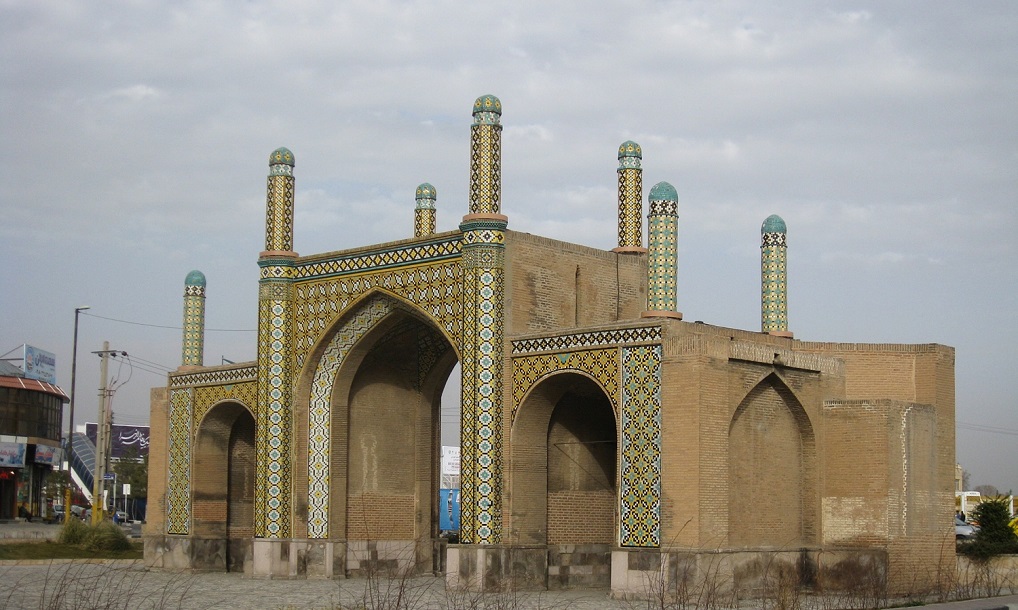
Qazvin was once a capital of Iran (only for 57 years though!) and, maybe, it owes its beauty to that time. Every sight you visit – a mosque, bazaar or city gate, – you will see lots of unique ornaments which never repeat each other. The best comparison that comes to my mind is Golestan Palace in Tehran. You will see similar tile work, but on a larger scale!
Most of the city center was built during the Safavid period (16th century), to help you understand where it is on the timeline, I can say that the Safavids moved the capital from Qazvin to Isfahan in 1598 and only years later, most notable places in Isfahan like Naghsh-e Jahan Square and all the mosques surrounding it were built. I have to admit that Qazvin is not as grand as Isfahan, but it is definitely older.
What to Visit in Qazvin
The Bazaar
Every Iranian city starts with a bazaar. Qazvin has a big one which has been renovated recently and prepared to welcome tourists. Although nowadays it has lost its main function, and locals don`t do their shopping here anymore. After renovation it has been turned into a tourist attraction; most shops are occupied now by local handicraft masters. A few nice cafes are scattered around the bazaar area as well. Nevertheless, Qazvin`s bazaar is a must-see for its traditional architecture, a huge caravanserai (considered to be the largest covered caravanserai inside a city in Iran) and impressive Al-Nabi mosque located in the heart of the bazaar.
At the entrance of the bazaar there is tourist information bureau which offers free Qazvin tours on Fridays (as of February 2016). Check them out for directions, recommendations and city maps as well.
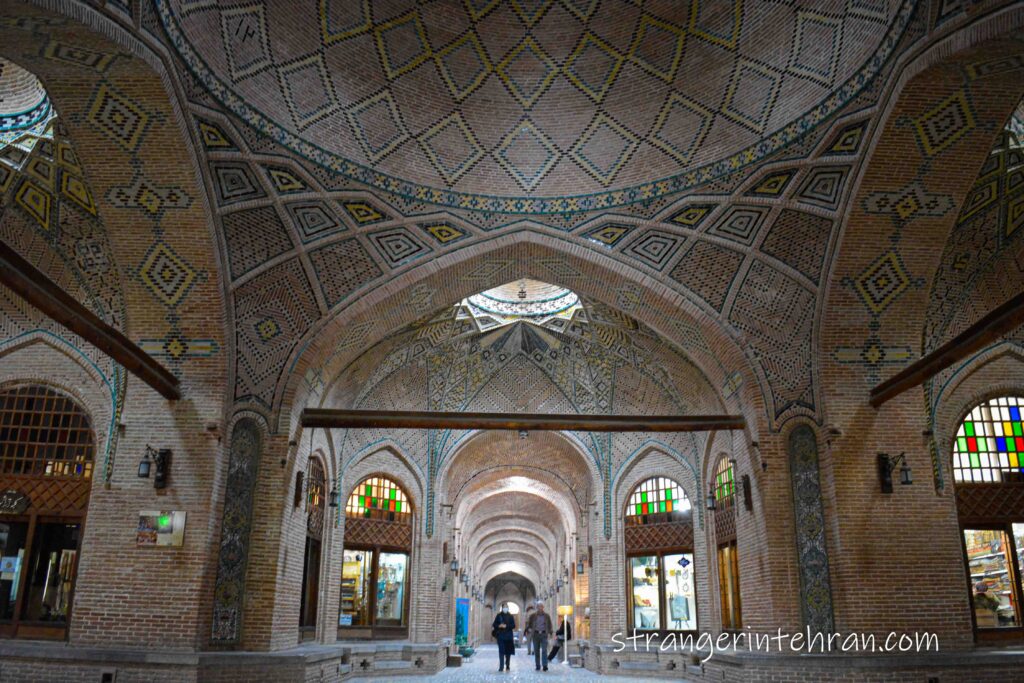
If you take the main lane, you will finally reach the 18th-century Al-Nabi mosque (also known as Shah mosque or Soltani mosque) which holds Friday prayers.
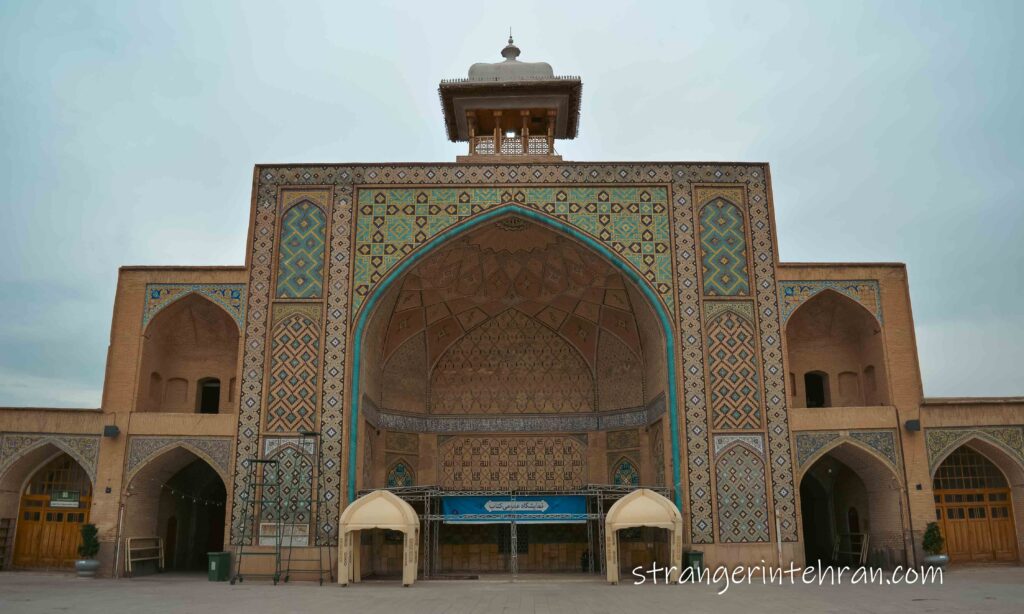
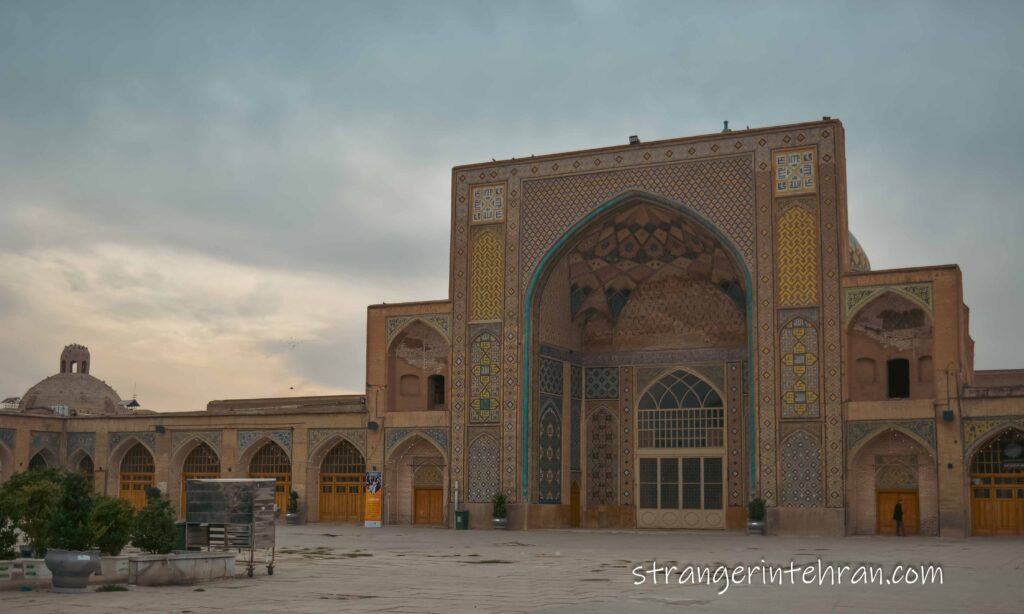
Wandering in the lanes of the bazaar you will see fewer and fewer people which, on the other hand, will let you enjoy the architecture more. This part of the bazaar is not as polished as the first part because actually very few tourists make it that far. But I would say that the atmosphere here is far more authentic and real. Here are a few shots I got from that part of the bazaar.
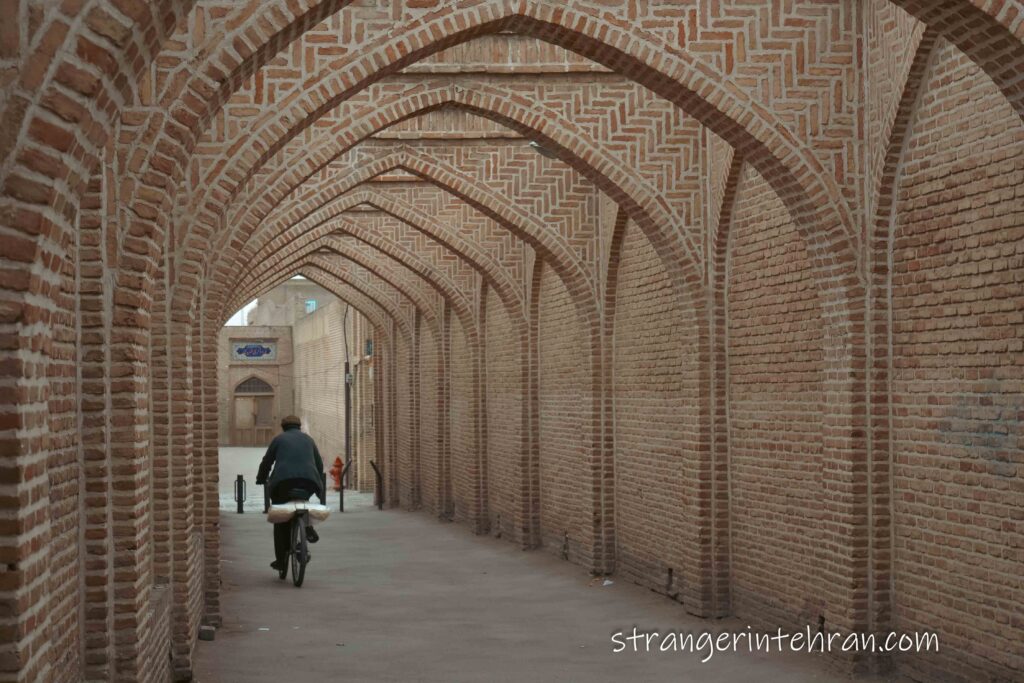

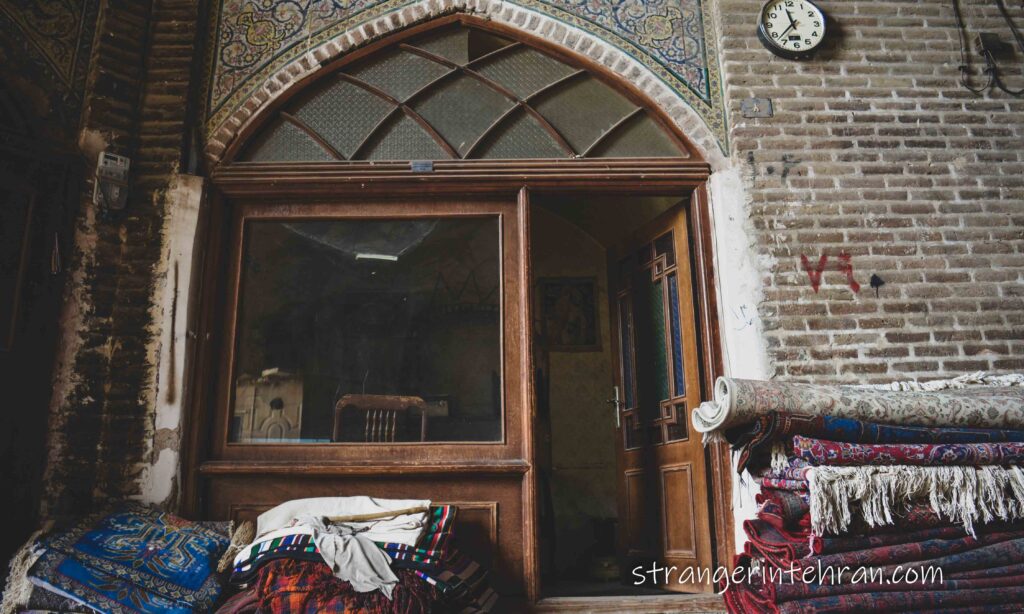
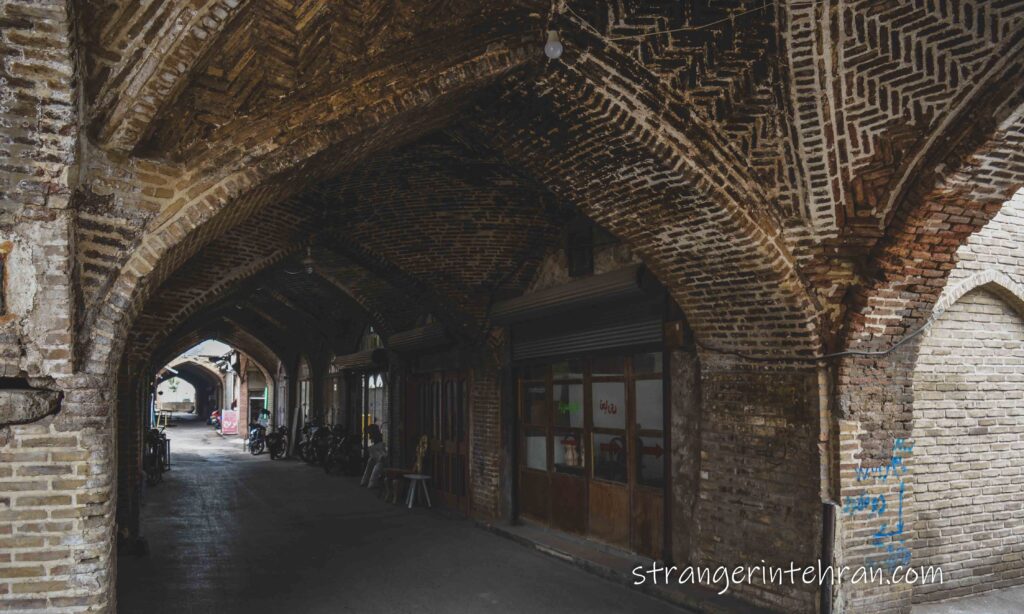
Mosques
I have already mentioned Al-Nabi Mosque which is worth a short visit if you are wandering through the bazaar. Two other remarkable mosques which I strongly recommend to visit are Jameh Atigheh Mosque and Imamzadeh Hossein Mosque (which entrance became the symbol of Qazvin).
Atigh Jameh Mosque (meaning Old Jameh Mosque) was in a disastrous condition when we visited it. It was literally falling apart. And it would be extremely sad to lose it. It reminds Al-Nabi mosque pretty much, but is smaller and more intimate.
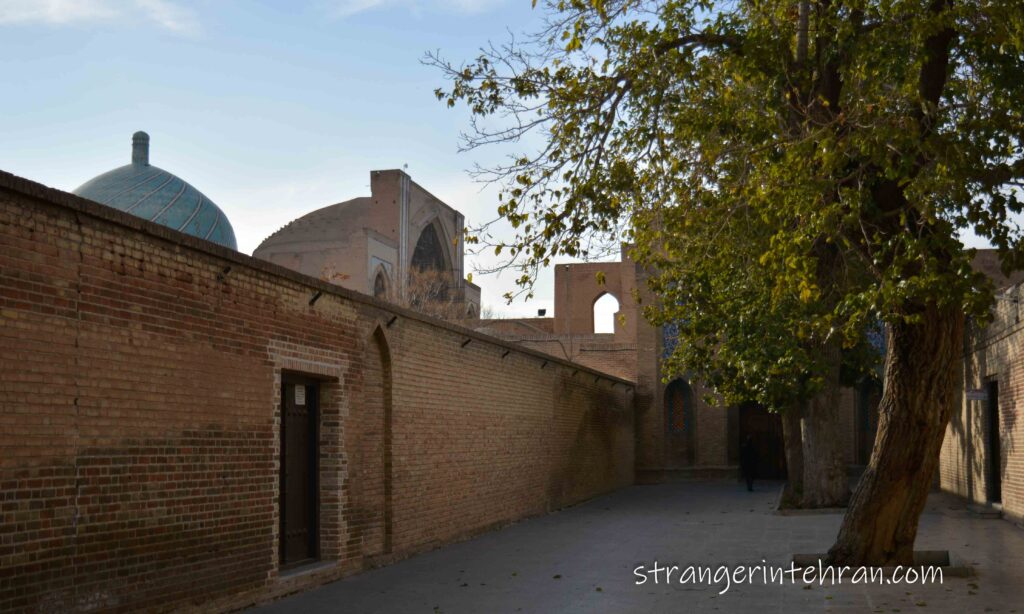
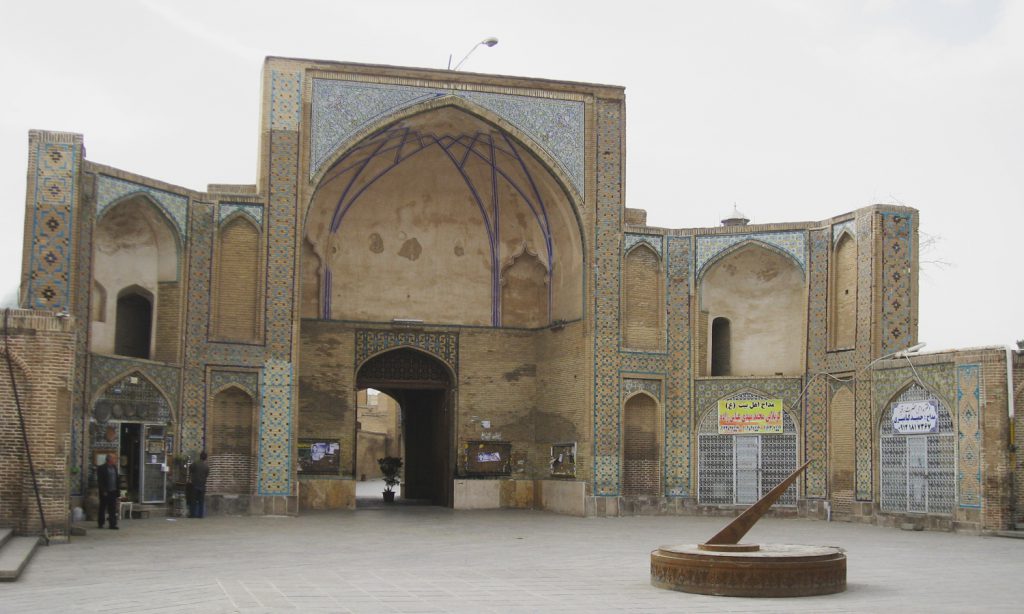
On the left from the main entrance there a ceramics shop full of amazing blue bowls and cups and other stuff in the traditional Iranian style. All handmade and painted by hand – you won`t be able to find two things with exactly the same shape or pattern. Extremely cheap as well, so it will be a hard task to leave without a purchase!
If you decide to visit Atigh Jameh Mosque, it would be a good idea to walk there. It`s located in Sepah Street which is believed to be the first street ever built in Iran! On the map, you can find it under the name Shohada Street. On the north end of the street you can see the entrance of Ali Qapu Palace which is interesting enough to stop by to take a couple of photos and move on. The palace itself is closed for visitors.
The last must-see mosque in Qazvin is marvelous Imamzadeh Hossein (Shazdeh Hossein on the map) with walls completely covered with pieces of mirrors inside and ornaments outside.
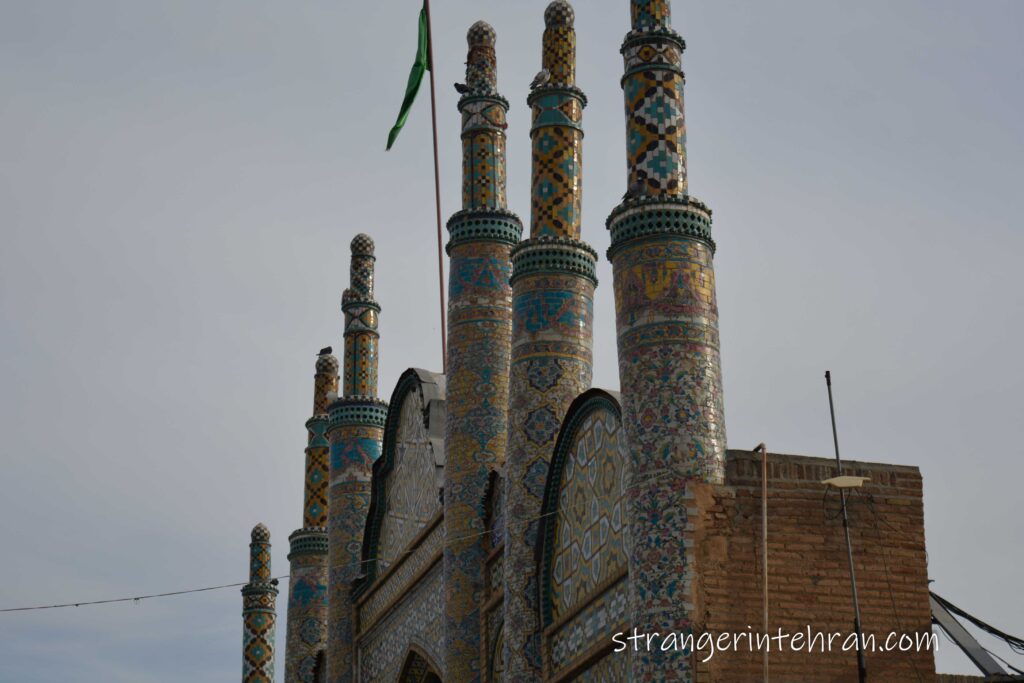
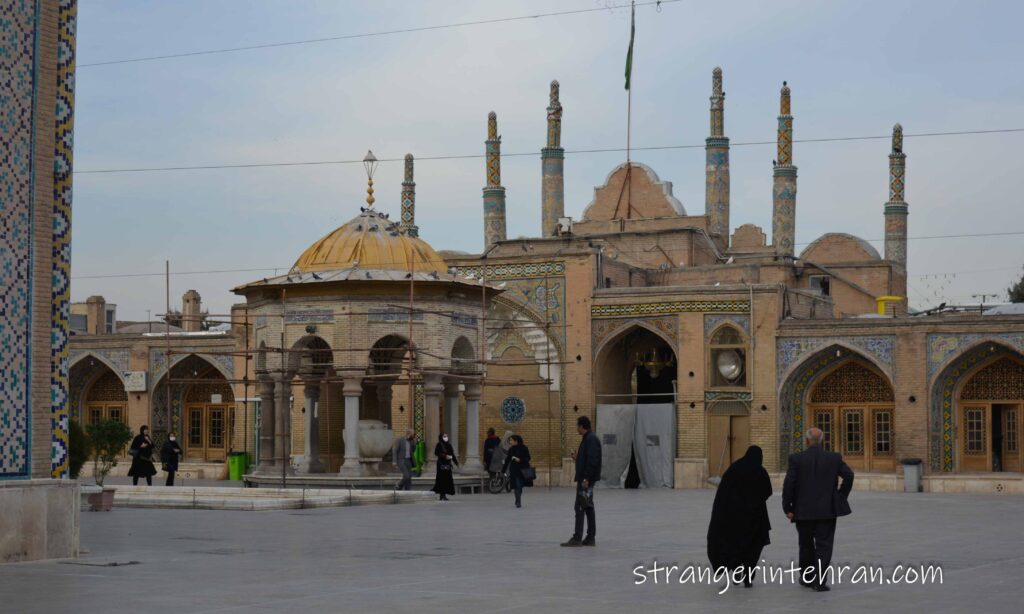

The next place is not actually a mosque, but it is used for religious purposes, so I put it here.
One of the highlights of your trip to Qazvin can be Aminiha Hosseiniyeh (Aminiha Historical House on the map). Hosseiniyeh is a place where mourning ceremonies dedicated to Imam Hossein (usually during the month of Moharram) would take place. This one used to be a house of a wealthy family that later gave it away to open a hosseiniyeh in it. But what you will see in reality is a luxurious mansion built in 1858 with outstanding stucco work and mirror work, beautiful colorful windows (orosi) and rooms covered with carpets, a place where (if you are lucky) you can spend some time just relaxing and taking all this beauty in.

The Gates
Two other major sights of Qazvin are its gates. One of them, Old Tehran Gate (photo 1), is right near the bus terminal and used to welcome travelers for centuries. You won`t miss it if you come to Qazvin by bus. The other one, Darb-e Kushk Gate (photo 2 &3), is situated away from other sights and the historical center, but still is easily reachable from Azadi Square.

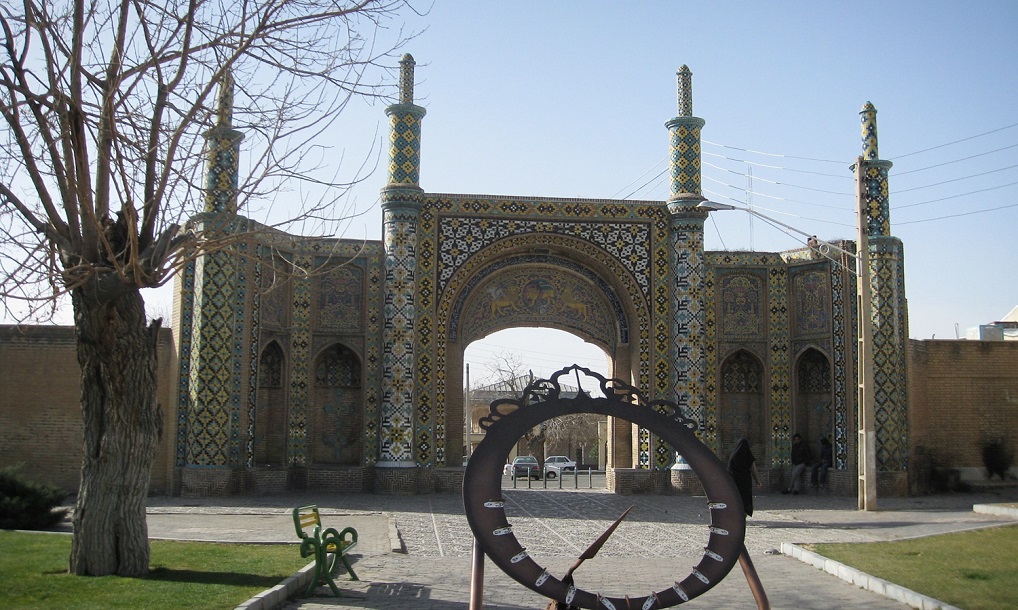
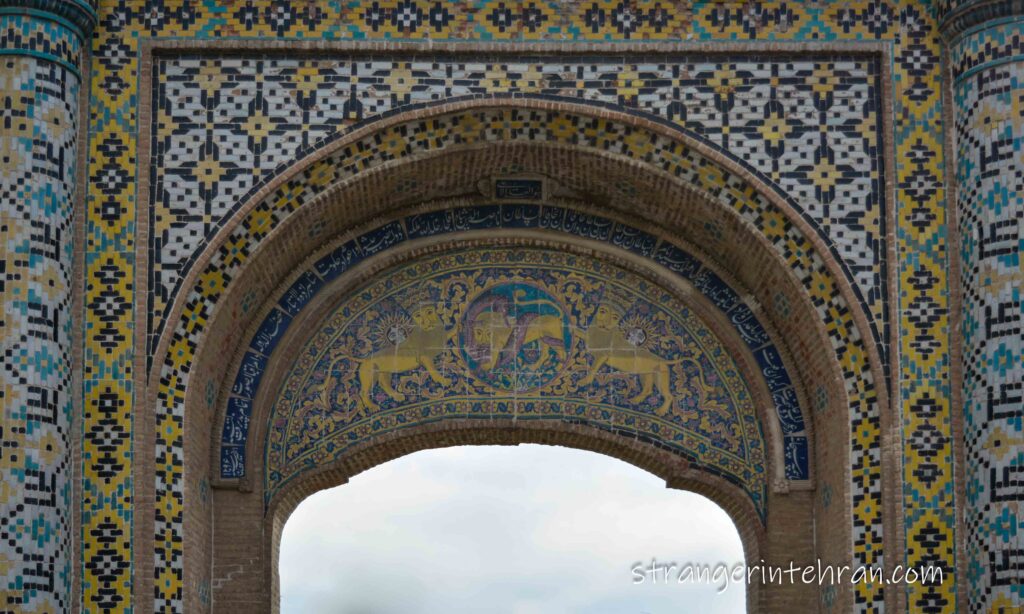
Less Popular Sights
There are, unfortunately, only two palaces left in Qazvin: Ali Qapu (which I have already mentioned) and Chehel Sotoun (also called Kolah Farangi Mansion) that dates back to the Safavids` times. Chehel Sotoun is located right at Azadi Square (also known as Sabzeh Meydan) in a small park and hosts a calligraphy museum. It must be said that Qazvin is well-known for its calligraphy masters. The most famous was Mir Emad Hassani. So, if you are interested in Iranian art, it might be a good idea to take a look at the museum`s collection and check out the palace from inside!
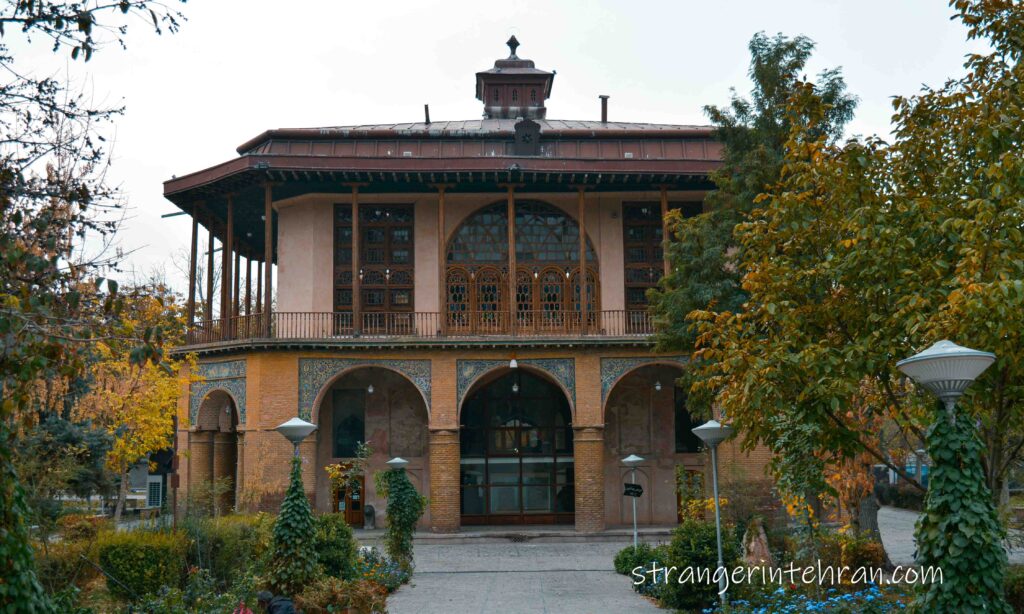
Qazvin has a big Armenian diaspora. That`s why there are a few churches in here. The bad news is that all of them are closed to visitors of other religions. Some churches even had to put a paper on the door asking tourists not to ring the bell, because they won`t be let in anyway. The only church that is open for visitors is Kantoor church which was built in early 20th century by Russians who were living there back then. Unfortunately, there was no one to take care of it when they left and it became a part of Qazvin`s tourist attractions. Iranians couldn`t let it stand still without bringing any income (the entrance is free) and opened a jewellery shop inside.
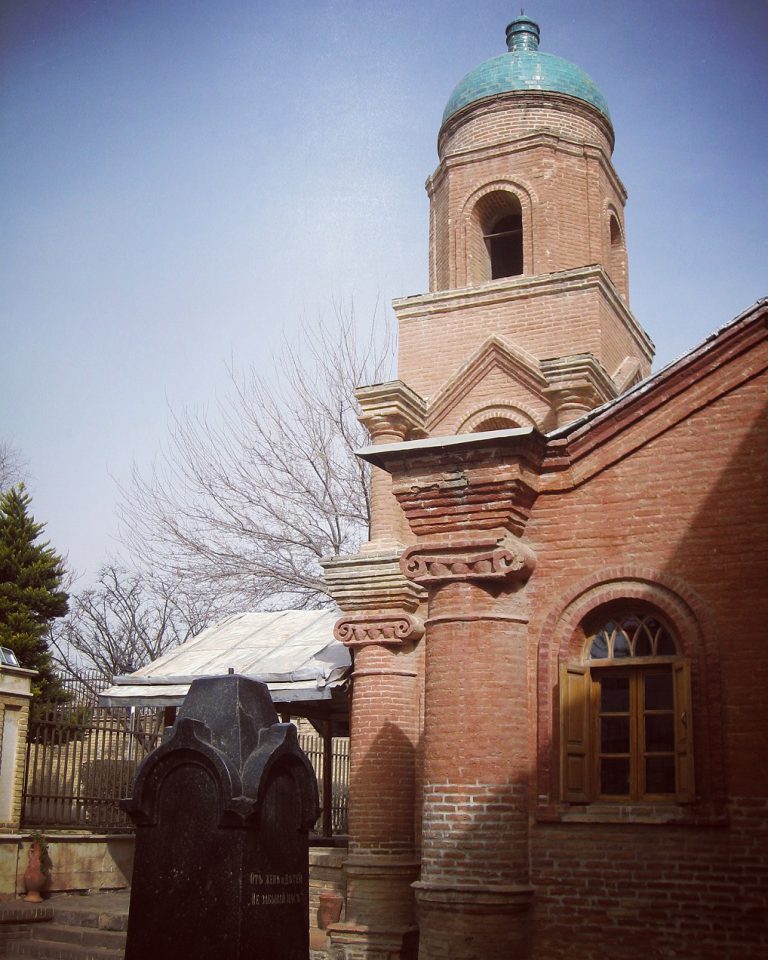
You can`t go to Qazvin and not visit one of its water cisterns. One of the biggest ones is Sardar Bozorg Water Cistern. Not in use anymore, but still worth visiting, I believe.
What is not worth visiting is Qajar Hammam which has been turned into an Anthropology Museum. Why not? – you may ask. Because there is a hammam turned into a museum in every Iranian city. What is more important is that they are all the same. It`s definitely worth visiting once on your whole trip, but going to hammam in every city is too much. I would recommend you to see the one in Kashan where Iranian prominent prime minister Amir Kabir was assassinated. It`s huge and shows how hammams worked much better than any other hammam.
Walk Around the City
If you have spare time in Qazvin, just take a walk in its quiet lanes to feel the atmosphere of the city. The historical center of Qazvin is full of atmospheric narrow lanes with small shops. Don`t hesitate to take a walk through them to see everyday life of the city. Although Qazvin is quite close to Tehran, it seems to be stuck in the last century having preserved its relaxed pace of life. Qazvin is one of the few cities which preserved its traditional lifestyle. Nowhere in Iran can you see so many people riding bikes!
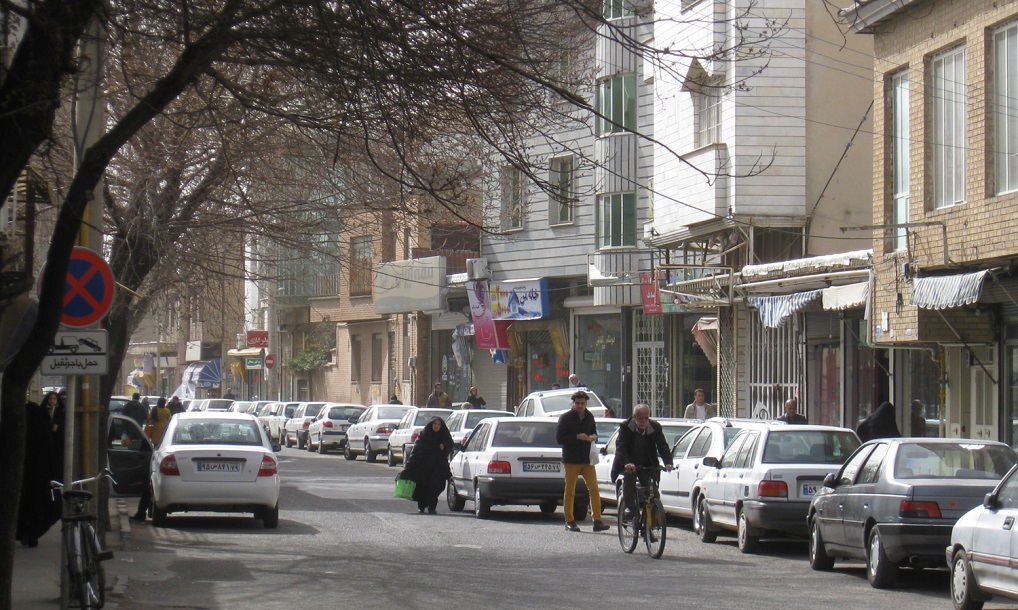
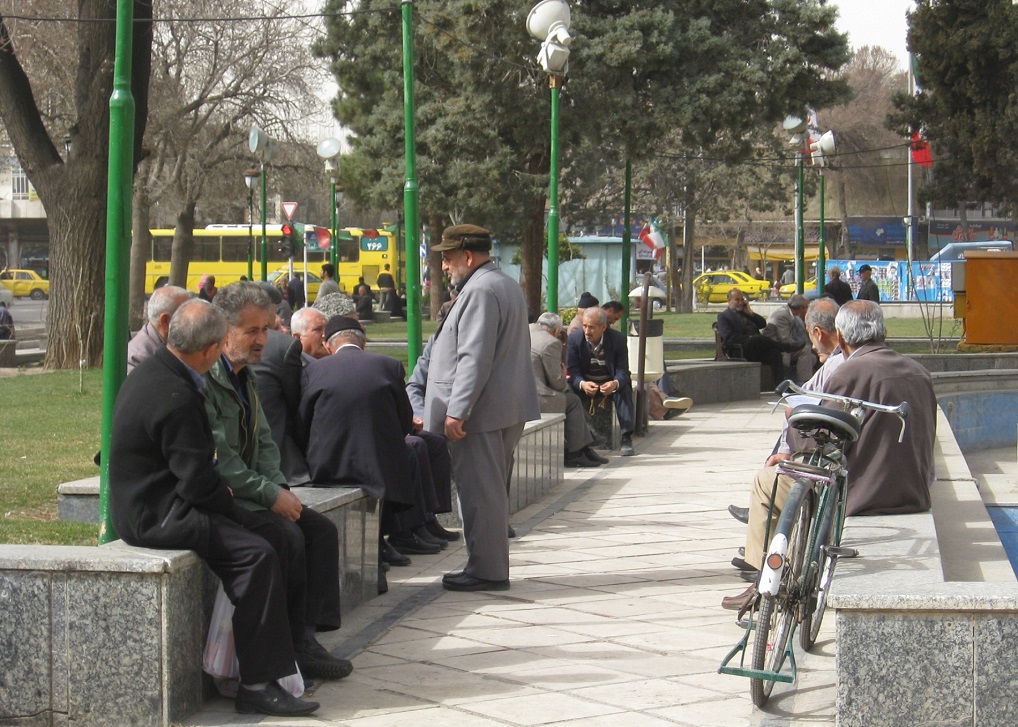
Food & Souvenirs
The most famous Qazvin dish is gheymeh nesar. It`s rice with pieces of meat, split peas, barberries, orange zest and nuts. Although some Iranians don`t like it because of its sweet-sour flavour, for me it`s heavenly delicious. We tried it in Eghbali restaurant which is very close to the sights. It`s a modern, a bit expensive (compared to other restaurants in Qazvin) restaurant which has an elaborate menu of Iranian traditional food including several Qazvin specials.
Two other good restaurants where you can try gheymeh-nesar is Nemooneh Restaurant and Kermani Restaurant.
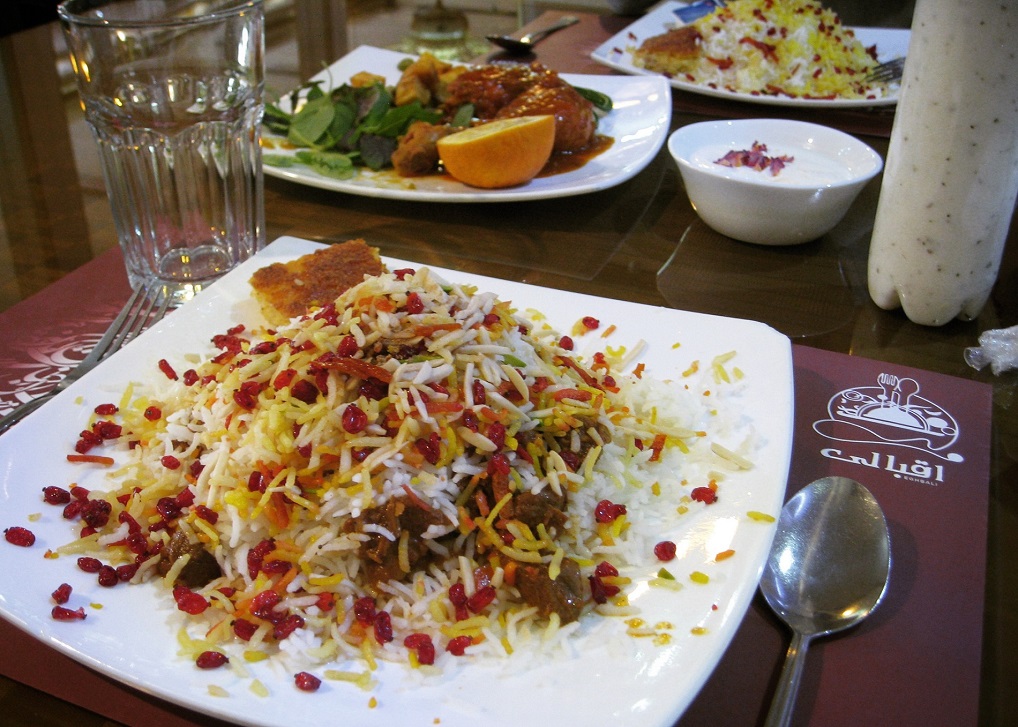
Souvenirs… Like many Iranian cities Qazvin has its own version of Iranian sweets. Here you can try super sweet tricolor baghlava and a bit too plain naan chay. To my taste, of course.
Study in Qazvin
Those who are considering coming to Iran to study Persian (Farsi), make sure to check out Qazvin`s Imam Khomeini International University which offers a complete course of Persian as a foreign language. I would recommend to contact them directly as their website doesn’t offer much information. There`s their contact information.
When To Go
The city is amazing at any season, but especially beautiful in spring and autumn. However, the best season for Alamut valley is summer as it`s located on the heights and it`s much chillier there than in the city.
How To Get There & Around
The easiest way would be taking a bus or a shared taxi from Azadi Square terminal which goes pretty frequently. The trip will take about 2 hours. I believe, you can even take a bus that goes to Zanjan, Tabriz or Rasht if you are in a hurry. But these buses usually don`t go into the city, so you`ll have to get off on the outskirts of Qazvin.
Inside the city, you will hardly need any transportation – you can easily walk. And to get to more remote locations like the gates, you can get a Snapp. Use the map to find your way to all tourist attractions mentioned in the guide.
Around Qazvin
Qazvin is a beautiful one-day getaway destination from Tehran. One day will be enough to see the city, however, if you have more time, I would recommend you to stay here for one more day to pay a visit to Alamut valley with its stunning nature and a historical castle and, of course, crystal-clear Evan lake.
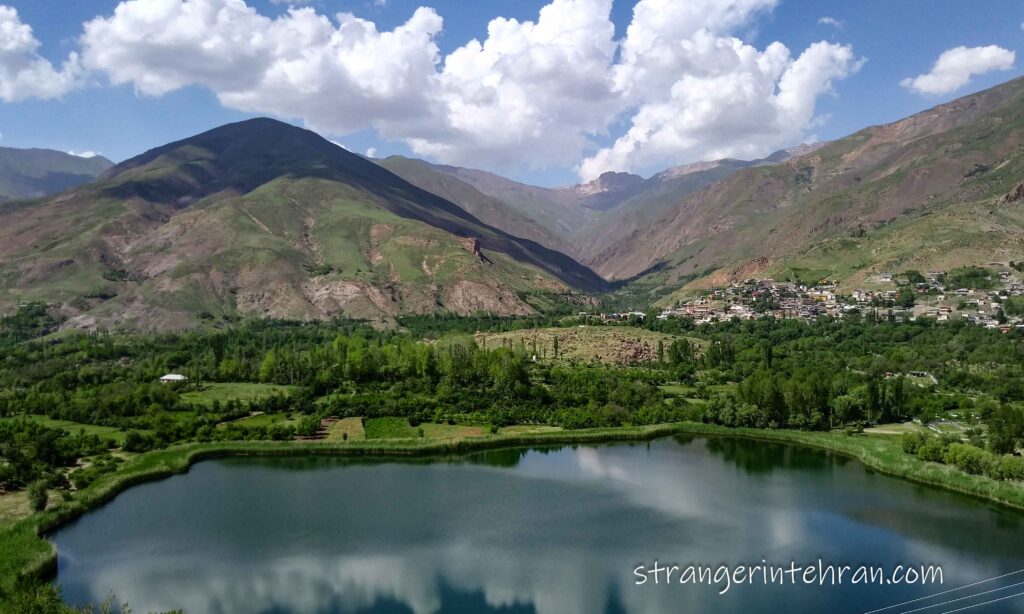
I would be more than happy to find out about your impression of Qazvin! Want to share your favorite place in Qazvin that I`ve missed? Don`t hesitate to write it in comments! Looking forward to your feedback!
By the way, if you find this guide useful, feel free to share it with your friends!

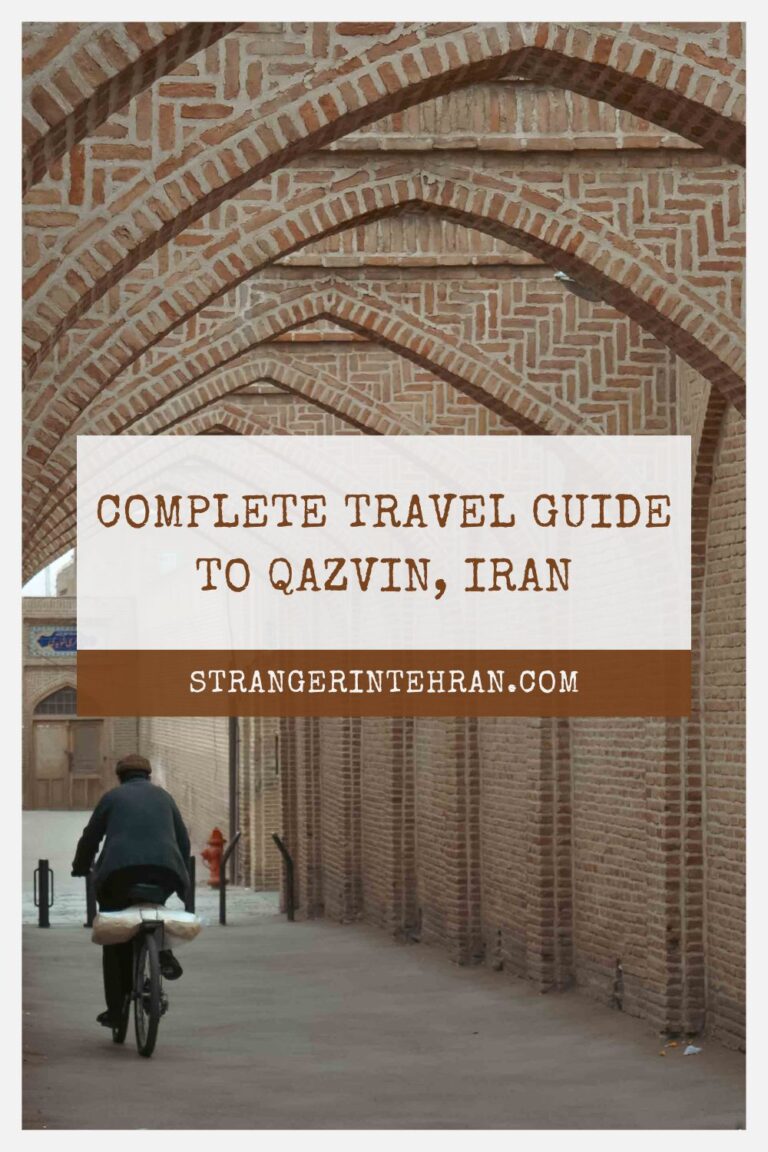
YOU MIGHT ALSO LIKE
You May Also Like

Travelling Iran: What to See in Yazd
August 7, 2018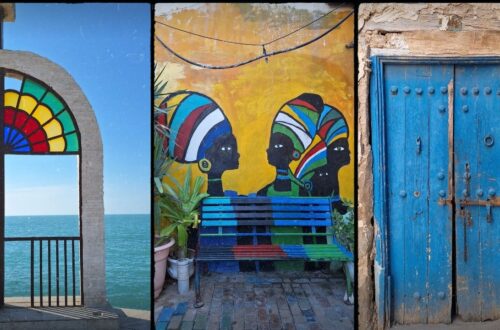
Complete Travel Guide to Bushehr
August 27, 2024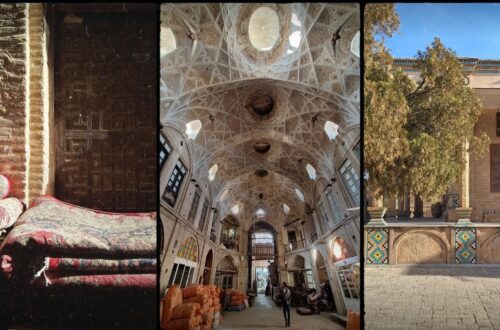
2 Comments
amir ghorbani
hello
We are so glad to see more travelers in Alamut valley(valley of assassins) and qazvin
We would be more than happy to help you during your stay in Qazvin and help you for this adventure
Pingback: